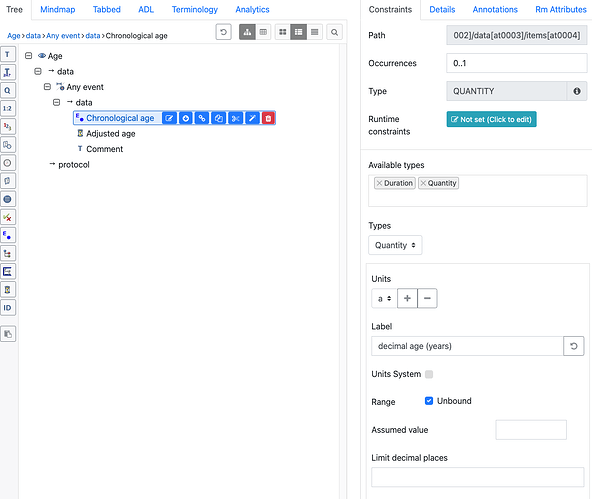I’m working with the RCPCH Growth Chart and building a template. Within this there is a section in the response as follows:
"chronological_decimal_age": 8.167008898015059,
"corrected_decimal_age": 8.139630390143736,
"chronological_calendar_age": "8 years and 2 months",
"corrected_calendar_age": "8 years, 1 month and 3 weeks",
"corrected_gestational_age": {
"corrected_gestation_weeks": null,
"corrected_gestation_days": null
},
"comments": {
"clinician_corrected_decimal_age_comment": "Correction for gestational age has been made.",
"lay_corrected_decimal_age_comment": "Because your child was born at 38+4 weeks gestation, an adjustment has been made to take this into account.",
"clinician_chronological_decimal_age_comment": "No correction has been made for gestational age.",
"lay_chronological_decimal_age_comment": "This is your child's age without taking into account their gestation at birth."
},
"corrected_decimal_age_error": null,
"chronological_decimal_age_error": null
I navigated to the Age.v0 archetype but has a query before submitting a CR. There’s clear duplication here and I believe the API response is just being comprehensive. But we don’t really need both. However, I could not see a way of including the decimal without modification of the Chronological age and adjusted age.
Happy to submit a CR but wondered if the current archetype should do the job anyway?
Including the decimal age is straight forward however (thank you @ian.mcnicoll for being my spectacles…)
Note: API POST for reference:
{
"birth_date": "2020-04-12",
"observation_date": "2028-06-12",
"observation_value": 115,
"sex": "female",
"gestation_weeks": 38,
"gestation_days": 4,
"measurement_method": "height",
"bone_age": 10,
"bone_age_centile": 98,
"bone_age_sds": 2.0,
"bone_age_text": "This bone age is advanced",
"bone_age_type": "greulich-pyle",
"events_text": ["Growth hormone start", "Growth Hormone Deficiency diagnosis"]
}
